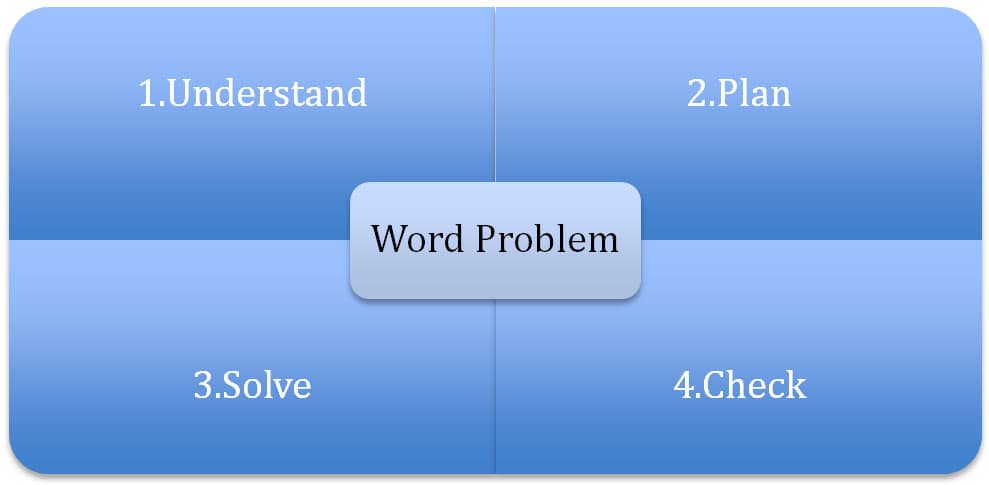Activities
Activity 1: Discussing Problems using Graphic Organizers
Throughout this unit, I will be using several graphic organizers to discuss word problems. The use of these graphic organizers could possibly be used for a few specific student activities or implemented on a regular basis.
Venn Diagrams: Students can use this classic organizer to compare and contrast problem types they encounter. I plan to use a Venn diagram that includes three circles, rather than one. It can be used in the traditional way, or students can also place problems they feel cannot be qualified on the outside of the circles. An example of how to arrange circles or build an image for student use is below. I have purposely left the headings blank because I would like students to define their own titles based on what they observe about problems.

Problems that students do not feel belong within the confines of the Venn diagram can be placed on the outside.
UPS, Check Problem Solving Boards:
Students will be expected to use this format for problem solving for all written problems they encounter throughout the school year. It is my hope that by the end of the school year, they will be able to draw their own problem solving boards. This diagram is directly related to the methodology I discussed above. An example of how to organize and layout the graphic is provided below and a blank template for students will appear in the appendix.

Activity 2: Sorting Problems
Students will sort problems many times throughout this unit. I plan to use a Venn diagram to help students sort word problems by the types they have already identified. Students will be divided into small groups consisting of 3-5 students. Each group will be given a bag that contains word problems written on thin strips of paper. In order to differentiate this activity, some bags will contain only one-step problems, some will contain both one and two-step problems. As a group, students will read through the problems and categorize them in as many groups as they can, based on qualities they find within problems that are alike, different, or that do not fit into a category at all. At this stage students will only sort problems by their own definitions. As the unit progresses, and student understanding of word problems begins to develop, it may be appropriate to ask students to use specific terminology to categorize word problems but not necessarily the terminology in figure 1.
Activity 3: Word Problem Project
This project will be worked on throughout the entire unit. In small groups, students will be guided in writing their own one and two-step addition and subtraction word problems. After conferencing several times with the teacher and students in their groups, students will get to publish their word problems for the class to view. Students will be able to publish in the format of their choice. The guide must include the following: a guide for solving word problems (tips and suggestions for solving problems), a graphic organizer, and at least ten word problems.

Comments: